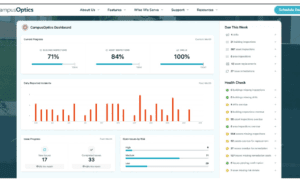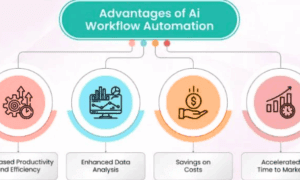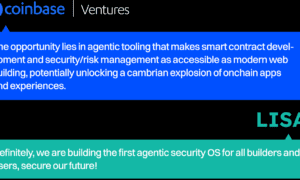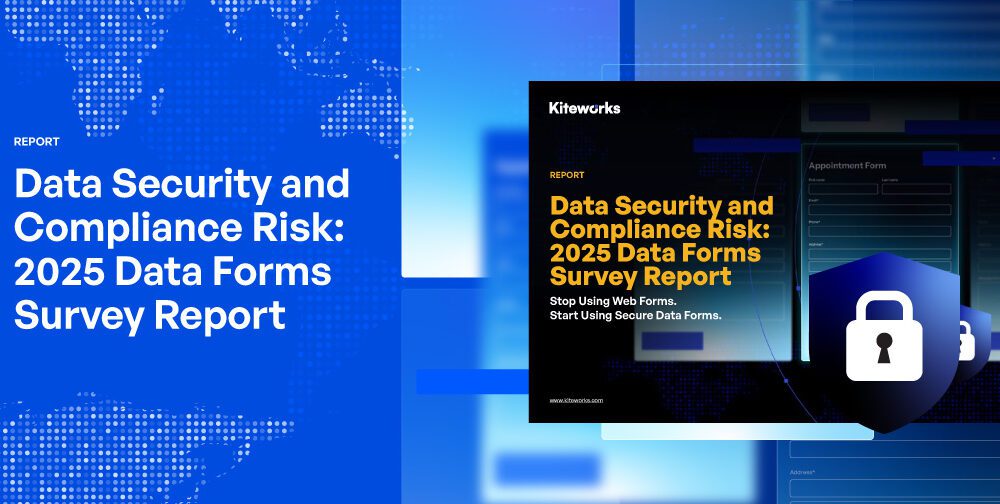Google processes 8.5 million searches every day. This staggering number is a chance for smart PPC management to attract potential customers.
Setting up PPC campaigns and forgetting about them isn’t enough. Bid costs keep rising, and smartphones generate 52% of website traffic. Your PPC ad management needs careful planning and constant fine-tuning to succeed. PPC gives you better ROI visibility than almost any other marketing method, which makes it a powerful tool when used right.
Our experience as PPC managers has taught us that campaign management never stops evolving. Perfect optimization might be out of reach, but it remains the main goal we want to achieve. On top of that, your PPC strategy must include platforms beyond search engines since 62% of people use social media.
This piece will show you how to run PPC campaigns that boost sales and conversions on all channels—online, in-app, by phone, or in-store. This step-by-step approach will help you become skilled at PPC and get better returns on your investment, whether you’re starting out in digital advertising or looking to boost your current strategy.
Understand the Basics of PPC Management
PPC advertising stands out as one of the best ways to get targeted traffic to your website. Let’s understand what PPC management means and why it matters for your marketing strategy before creating campaigns.
What is PPC and how does it work?
PPC (Pay-Per-Click) management is about running and fine-tuning paid advertising campaigns. Advertisers pay a fee whenever someone clicks their ads. You buy visits to your site instead of earning them through organic means. This model works well because you pay only when potential customers click your ads.
The PPC system works through a detailed bidding process that has:
- Keyword Selection: Choosing relevant terms related to your business offerings
- Bidding Strategy: Setting maximum amounts you’ll pay per click
- Ad Auction: Your keywords trigger an auction that decides which ads show up
- Display and Payment: Winning ads appear in search results, and clicks determine what you pay
Your ad position depends on more than just your bid amount. Google creates an Ad Rank based on your Quality Score and maximum bid. Quality Score looks at ad relevance, expected click-through rate, and landing page experience. Smart advertisers with smaller budgets can beat bigger spenders by creating better, more relevant ads.
PPC management goes beyond search ads. You can run shopping, display, video, and performance max campaigns on Google’s advertising networks. Each type helps achieve different business goals, from quick sales to brand recognition.
Why PPC is important for business growth
PPC advertising brings clear benefits that help businesses grow. You see results right away. While organic strategies take months to show results, PPC campaigns can bring website traffic almost instantly.
You can measure everything in PPC. The platforms give you detailed stats to track performance and calculate ROI. This data helps you make smart decisions to improve campaigns. PPC advertising typically brings £1.59 back for every £0.79 spent, giving you 200% ROI.
PPC shines with its targeting options. You can reach specific audiences based on:
- Keywords and search intent
- Demographics and location
- Browsing behavior and interests
- Time of day and device type
This focused approach connects you with people actively looking for what you offer.
PPC gives you amazing control and flexibility. You can set daily or monthly budgets, tweak campaigns based on results, and stop ads that aren’t working. You always know exactly where your money goes.
Growing businesses find PPC works well with other marketing efforts. It helps you learn valuable keyword insights for SEO, creates data for better content marketing, and fits perfectly with email and social media campaigns. Since only 10% of advertisers optimize their Google Ads accounts weekly, you have a great chance to outperform your competition.
PPC management needs constant attention to get the best results. Master it, and you’ll target the right audience, measure your returns, and grow your business steadily.
Set Up Your First PPC Campaign
Image source: AI Joux
You’ve got PPC basics down, so let’s head over to setting up your first campaign. The setup phase will determine how well you spend your budget and is vital to your campaign’s success.
Choose the right platform (Google, Bing, Meta)
Your first big decision is picking the right platform. Each one brings something different to the table based on what your business needs:
Google Ads dominates with more than 90% of the search engine market share worldwide. It’s the perfect choice to reach people who are looking for specific products or services. The platform works really well when you want high-intent leads and better conversion rates.
Microsoft Advertising (formerly Bing Ads) connects you with users on Bing, Yahoo, AOL, and other search partners. You’ll find an older, wealthier audience here with higher education levels. This makes it great for B2B advertising or if you want lower PPC costs.
Meta Ads (covering Facebook and Instagram) shines at discovery-based advertising through smart audience targeting. Unlike search platforms where people look for products, Meta platforms help build brand awareness and social engagement.
Google Ads is a solid starting point for most businesses because of its huge reach. You can always branch out to other platforms as your strategy grows.
Define your campaign goals and budget
Your campaign needs clear objectives from the start:
- Set specific goals: Figure out if you want to focus on brand awareness, website traffic, leads, or sales.
- Choose campaign type: Your goal helps pick the right campaign type. Google Ads lets you choose from Search, Display, Video, or Performance Max campaigns.
- Establish your budget: Start small while you test what works. Most businesses need at least £794.16 to advertise on most platforms (LinkedIn needs more – around £7,940).
Each platform handles budgets differently. Google Ads sets budgets at campaign level, while Meta Ads uses ad set level. The daily budget rules also vary:
- Google Ads looks at monthly averages and might spend up to 100% more on good days
- Meta Ads uses weekly averages and could spend up to 25% more some days
Select your target audience
The right audience targeting helps your ads reach people who are likely to convert:
Geographic targeting: Pick the countries, states, or cities for your ads. Local businesses can target specific areas around their locations. You can adjust bids later for places that perform better.
Demographic targeting: Fine-tune your audience by age, gender, and household income (in the US). These aren’t perfect markers but help you optimize.
Behavioral targeting: Target based on what people like and do online. Google’s in-market audiences feature connects you with people actively researching your products or services.
Advanced targeting options: You might want to try:
- Customer match to reach existing customers
- Remarketing to previous website visitors
- Similar audiences to find new users who look like your best customers
Most experts suggest using 60-70% of your budget to find new customers and 30-40% to reach previous visitors.
These three core elements create a strong foundation for managing and improving your PPC campaign over time.
Do Smart Keyword and Ad Research
Quality keyword research is the foundation of successful PPC management. The keywords you choose determine who sees your ads and affect your conversion rates and campaign performance.
How to find high-converting keywords
Smart PPC managers know that high-converting keywords bring quality traffic that’s more likely to take desired actions. Google Keyword Planner helps you find relevant search terms for your business. This free tool gives you valuable data about search volumes and their changes over time.
Your keyword research should focus on:
- High-intent keywords that show readiness to purchase (terms like “buy,” “price,” or product-specific searches)
- Long-tail keywords with three or more words that reach users closer to buying
- Keywords with optimal metrics that show high conversions and low cost per acquisition (CPA)
The most valuable keywords usually strike a balance between search volume and cost. High-volume keywords can bring lots of traffic, but they might attract many unqualified clicks. Long-tail keywords tend to convert better despite lower search volume.
Tools like SEMrush or Ahrefs let you learn about your competitors’ keywords. You should also check your site metrics through Google Analytics to see which keywords drive conversions.
Using negative keywords to save budget
Negative keywords work as strategic filters for your PPC campaign management and block irrelevant search terms from triggering your ads. These filters prevent wasted budget on clicks that won’t convert.
These keywords have three match types:
- Negative broad match: Stops ads when searches have all your negative keyword terms in any order
- Negative phrase match: Blocks ads when searches contain your terms in the same order
- Negative exact match: Prevents ads only for searches matching your specified terms exactly
Regular analysis of your Search Terms report helps identify effective negative keywords. Look for irrelevant terms that triggered your ads and add them to your negative keyword list. If you sell premium furniture, you might add “cheap,” “free,” or “DIY” as negative keywords.
Negative keywords offer several benefits. They improve ad relevance, which boosts your Quality Score and might lower cost-per-click. They also make your targeting more precise by filtering out unqualified traffic. This approach makes sure your budget reaches users who are ready to buy.
Create and Launch Your Ads
Your PPC management strategy springs to life when you create compelling ads. The quality of your ads will affect your campaign’s success after you select keywords and platforms.
Write compelling ad copy
Your ad copy’s strength affects click-through rates significantly. Make your headlines match what users search by using your top-performing keywords. Show what makes your offer special – whether you provide free shipping, special promotions, or time-sensitive deals.
To get the best results:
- Add a clear call-to-action that tells users what to do next, like “Buy Now,” “Get a Free Quote,” or “Sign Up Today”
- Your ad extensions should give extra information that gives users more reasons to click
- Your message should reflect what users want to achieve
Design effective landing pages
Your landing page must turn interest into action once your ad grabs attention. Research shows that dedicated landing pages convert 65% better than regular website pages. Your landing page’s content should match your ad’s promises perfectly.
The best PPC landing pages have these features:
- Relevant visuals at the top that connect with your ad
- Headlines that are clear and include your main keywords
- Reviews, ratings and testimonials that build trust
- One focused call-to-action that makes it easy to act
Set up tracking and conversion goals
You won’t know which ads work without proper conversion tracking. Only 29% of Google Ads marketers have set up their conversion tracking correctly. The proper tracking setup needs these steps:
- Your ad platform should have a conversion action
- Your website needs the tracking tag
- You should define what counts as a conversion (purchases, sign-ups, form submissions)
Each conversion type needs a value, even non-monetary actions. This helps you measure ROI and calculate your campaign’s success accurately. Test your tracking through preview modes to make sure everything works before scaling your campaigns.
Monitor and Optimize Your Campaign
Your PPC campaign management begins a trip that goes beyond the initial launch. About 40% of marketers say monitoring and optimization are the biggest challenges in PPC. Let’s see how you can fine-tune your campaigns to get the best results.
Track key metrics like CTR and CPC
The best PPC managers check their performance metrics daily. We focused on click-through rate (CTR), which shows what percentage of impressions turn into clicks. Your ad strikes a chord with your audience when you have a high CTR, but low numbers mean you should work on your message.
Cost per click (CPC) matters just as much since it shows how much you spend per click. This helps you review your budget’s effectiveness. You should also watch these metrics:
- Quality Score: This affects your ad rank and CPC
- Conversion rate: The percentage of clicks that become actual results
- Return on ad spend (ROAS): The money you make compared to what you spend
A customized PPC dashboard can give you immediate views of how your campaigns perform.
A/B test your ads and landing pages
A/B testing, or split testing, lets you create different versions of ads or landing pages to find what works best. This testing can boost your CTR by double digits.
Start by setting specific key performance indicators (KPIs) that match what you want to achieve. Test different parts of your ads one at a time – headlines, copy, calls-to-action, and display URLs. Keep your targeting and bidding strategies the same during tests.
Your landing pages need testing to – try different layouts, content spots, form fields, and CTAs. A well-laid-out landing page might boost conversion rates up to 65%. Make sure you collect enough data before you make any decisions.
Adjust bids and targeting based on performance
Bid adjustments let you show ads more often by changing your bids up or down based on when, where, and how people search. You can improve ROI this way without changing your daily budget.
To make use of information better:
- Change bids for locations, times, and devices that work well
- Try automated bidding if you have enough conversion data
- Put your money where you get the most conversions
Keep in mind that multiple bid adjustments multiply together but can’t go above a 900% increase. Watch your automated bids carefully and adjust them yourself when needed.
Conclusion
PPC management isn’t a one-time setup – it’s an ongoing process. In this piece, we’ve explored everything that makes campaigns successful and improves ROI. Your strategy’s foundations depend on understanding PPC platforms, doing proper keyword research, and creating ads that convert.
Your campaigns need regular monitoring once they’re live. The best PPC managers know they need to track metrics like CTR, CPC, and conversion rates to optimize performance. On top of that, A/B testing different ad versions and landing page elements helps you find what appeals most to your audience.
Of course, budget management makes a huge difference in PPC success. Using negative keywords smartly saves money by filtering out irrelevant traffic. Smart bid adjustments help focus your budget on segments that perform well. This targeted approach helps you get the most from your ad spend and boosts campaign performance.
The digital world changes faster every day, but effective PPC management’s core principles stay the same. Evidence-based decisions, constant testing, and quick optimization create campaigns that deliver real results. Perfect optimization might seem out of reach, but the step-by-step approach in this piece will help you build campaigns that keep getting better.
Note that PPC management needs patience. Give your campaigns enough time to collect data before making big changes. This careful approach, combined with the smart use of techniques we’ve covered, will help your business grow through paid search advertising.



































